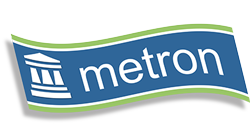With the majority of businesses using internal Cloud Services, whether it be Software as a Service (SaaS), Platform as a Service (PaaS) or Infrastructure as a Service (IaaS) in a VMware vSphere environment I'll be presenting a free webex on May 5th which gives an insight into how to manage the gathering Storm Clouds.
After an introduction to VMware's Virtual Infrastructure 4 (vSphere) environment andCloud Computing, I'll be discussing how Capacity Management provides the means to spot potential Storm Clouds far in advance and more specifically, how you can avoid them.
Delving deeper I'll be looking at IaaS and how to identify potential capacity on demand issues. Discussion focuses on topics such as:
With all this in mind, join me to find out what information and processes we recommend you need to have and implement to avoid an Internal Storm and ensure that Brighter Outlook!..
Register now http://www.metron-athene.com/training/webinars/index.html and I hope to meet you there.
Jamie Baker
Principal Consultant
After an introduction to VMware's Virtual Infrastructure 4 (vSphere) environment andCloud Computing, I'll be discussing how Capacity Management provides the means to spot potential Storm Clouds far in advance and more specifically, how you can avoid them.
Delving deeper I'll be looking at IaaS and how to identify potential capacity on demand issues. Discussion focuses on topics such as:
- identifying whether virtual machines are under or over provisioned
- the advantages/disadvantages of application sizing
- how to minimize SLA impact
- whether to scale the infrastructure out, up or in and ultimately how to get it right.
With all this in mind, join me to find out what information and processes we recommend you need to have and implement to avoid an Internal Storm and ensure that Brighter Outlook!..
Register now http://www.metron-athene.com/training/webinars/index.html and I hope to meet you there.
Jamie Baker
Principal Consultant
